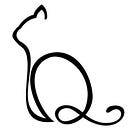Member-only story
What Are So Many Rogue Planets Doing in the Heart Of Orion?
Hundreds of free floating planets have been found in Orion. Where did they all come from?
Every week I send my email subscribers a newsletter covering advances in space and physics, as well as longer articles like this one. If you’d like to subscribe, you can do so on Substack by clicking here.
Long ago, the story goes, our solar system had a fifth giant planet. In form this world may have looked like Neptune — that’s to say, it was an ice giant, bluish in colour and held perhaps twenty times the mass of Earth. It probably lay somewhere between Saturn and Uranus, though back then the gas giants orbited much closer to the Sun, and the outer planets might have been arranged in a different pattern.
At some point Saturn and Jupiter suddenly swung outwards. Their movements pushed Uranus and Neptune outwards too, sending them careening through the belt of ice and dust at the solar system’s edge. Scattered comets rained inwards, bombarding the inner planets and leaving scars, still visible today, on the Moon.
Somewhere amidst this chaos the fifth planet was lost. Some models hint it moved inwards, first crossing the orbits of Saturn and Jupiter before suddenly being pushed away. Whatever ever happened, the end…
